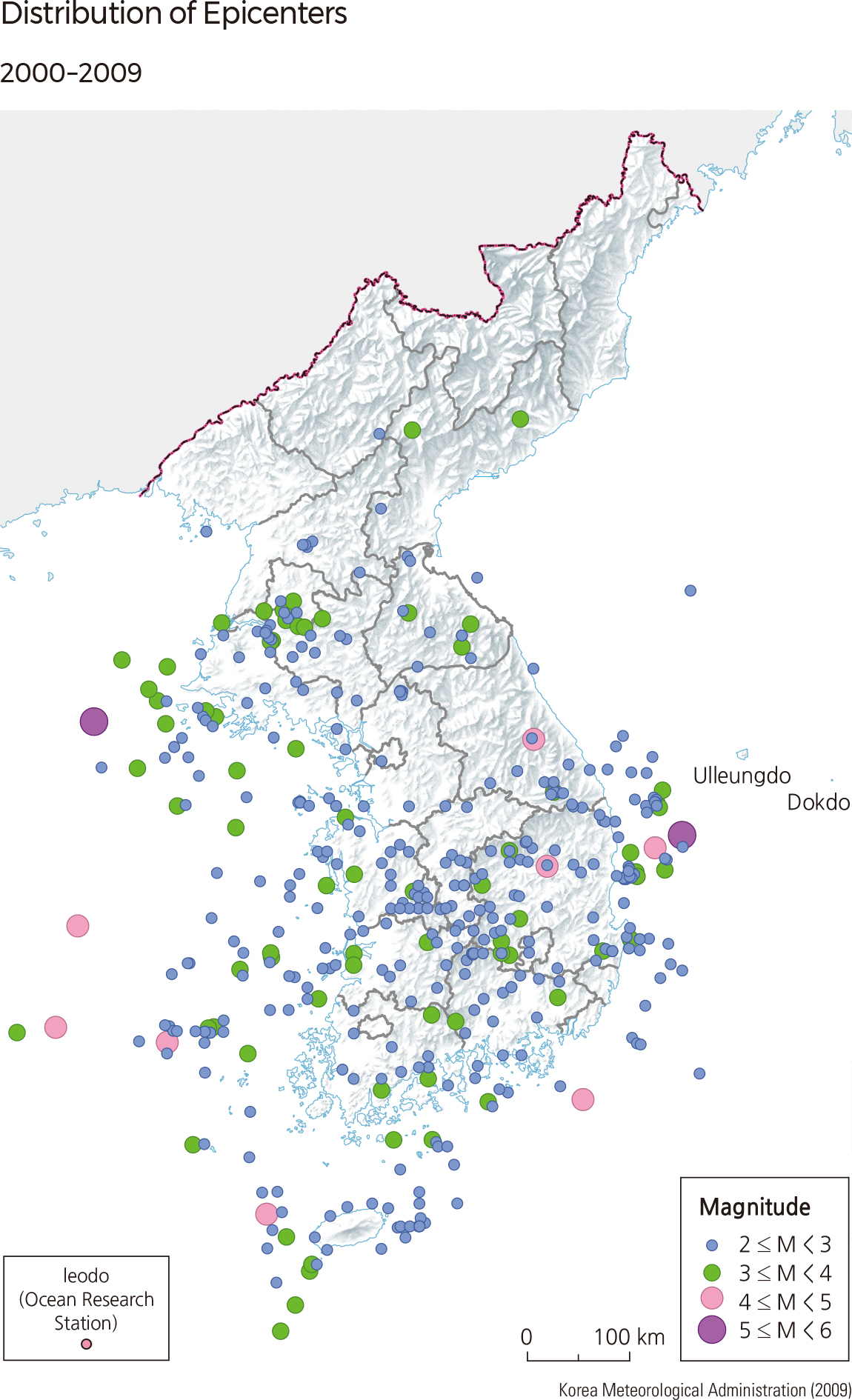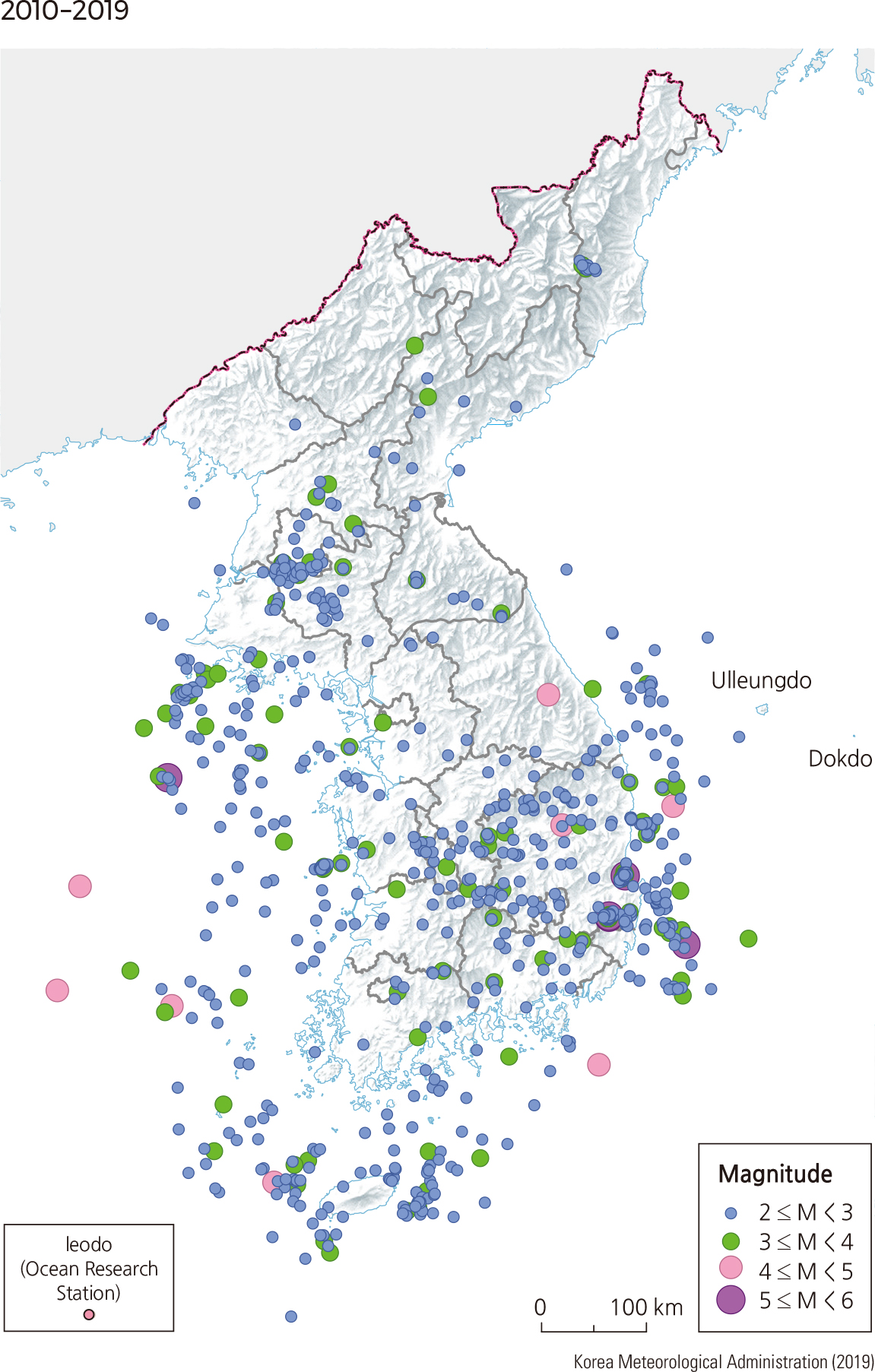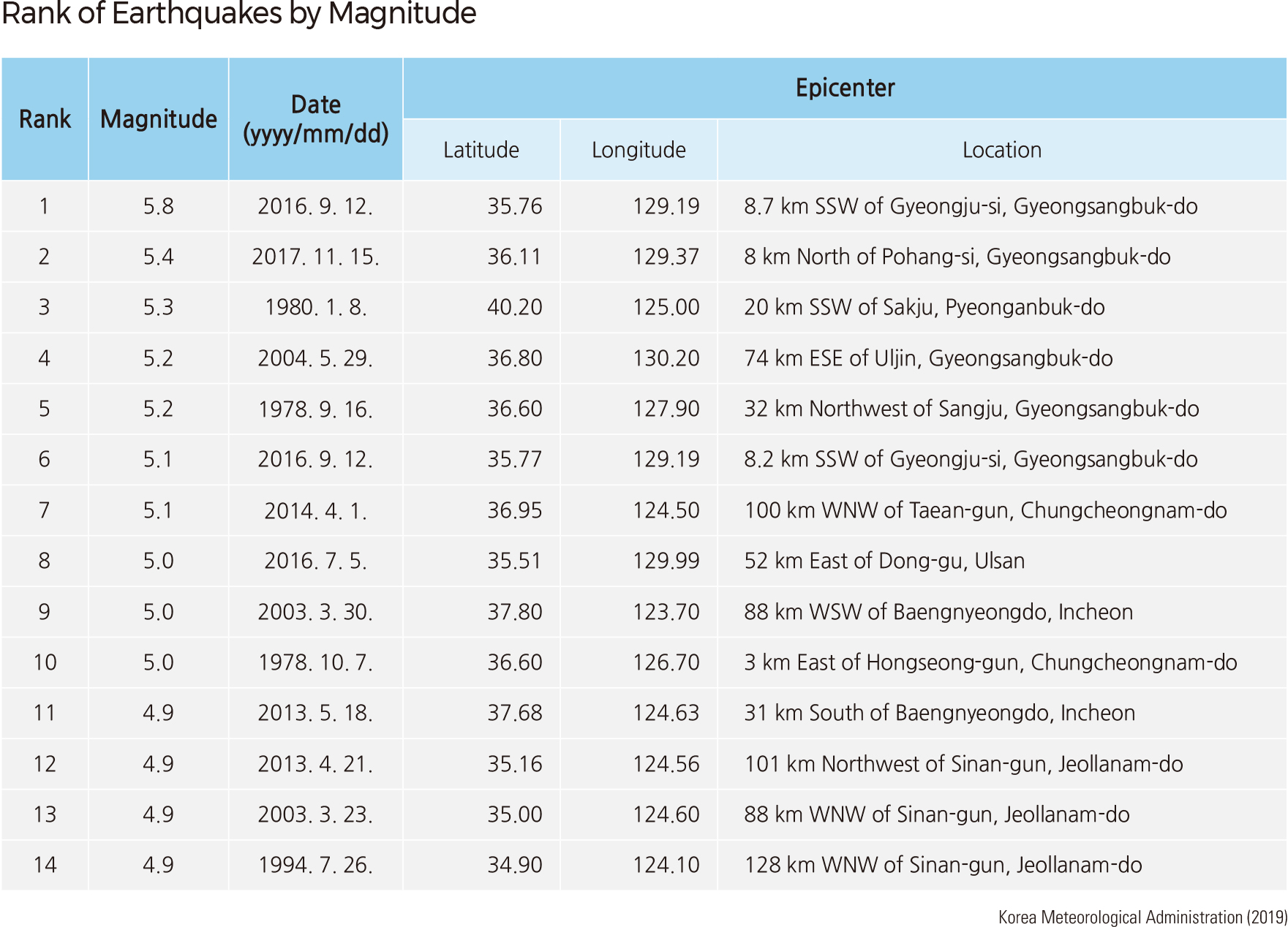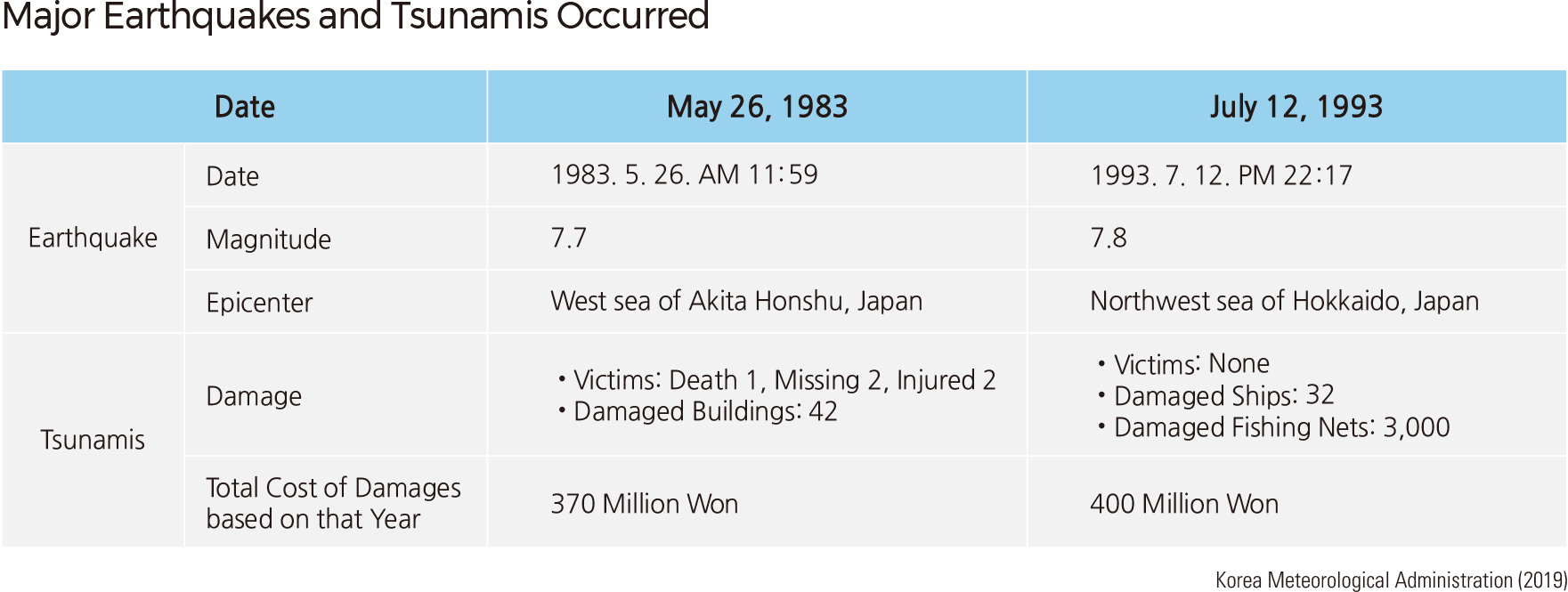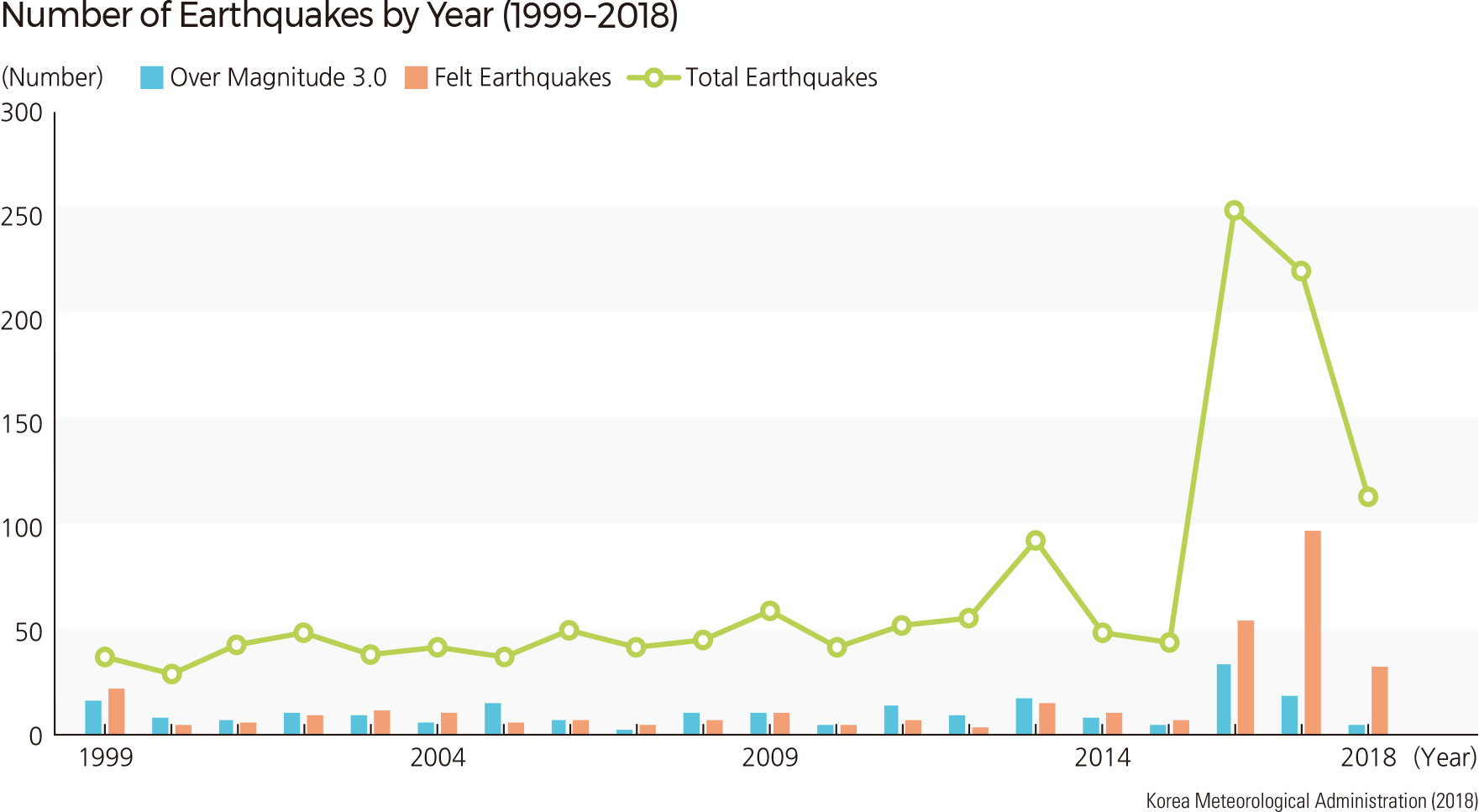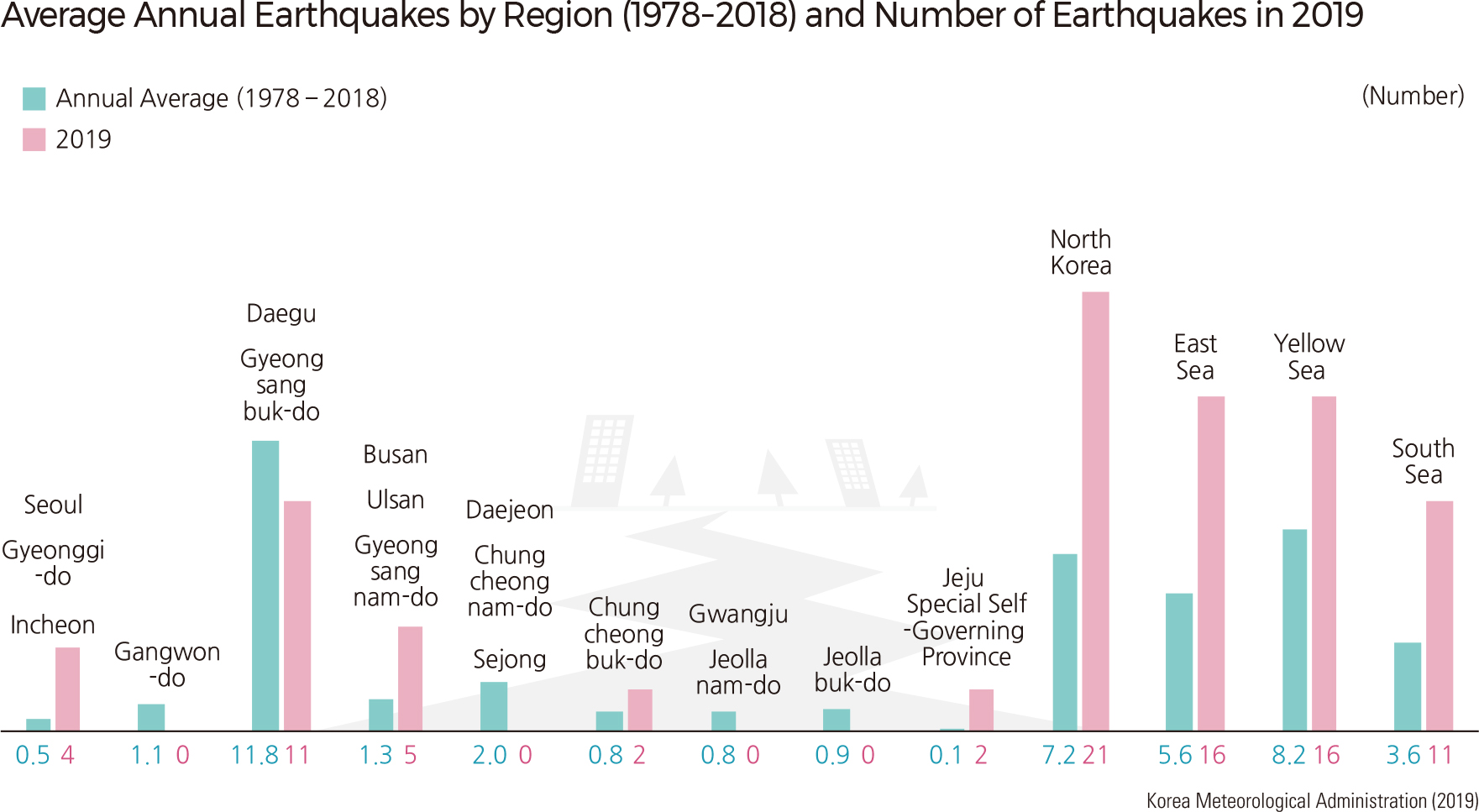English II 2020
Since 1999, earthquakes have been measured using the current digital method. The annual average frequency of earthquakes with a magnitude of over 2.0 from 1999 to 2018 is 69.9. In 2019, there were 88 earthquakes, which is higher than the 20-year average. There were 14 earthquakes with a magnitude of over 3.0 in 2014, which is above the annual average frequency of earthquakes (10.9 earthquakes) for the same period. Sixteen earthquake events were felt, which is 0.7 fewer than the annual average (16.7 events). The yearly record for earthquakes increased after the mid-1990s; the increased number of earthquakes reflects the expansion of earthquake observations due to improved observation techniques. Excluding 2016 and 2018, when the Gyeongju-Pohang earthquake occurred, there is no clear change in the frequency of earthquakes over 3.0 magnitude and earthquakes that are felt. Seismic sea waves or tsunamis occur when the seafloor uplifts and sinks due to earthquakes, creating huge waves that spread in all directions, potentially devasting coastal regions. In 1983 and 1993, the east coast of Korea was damaged due to tsunamis that had originated from Japan. |
